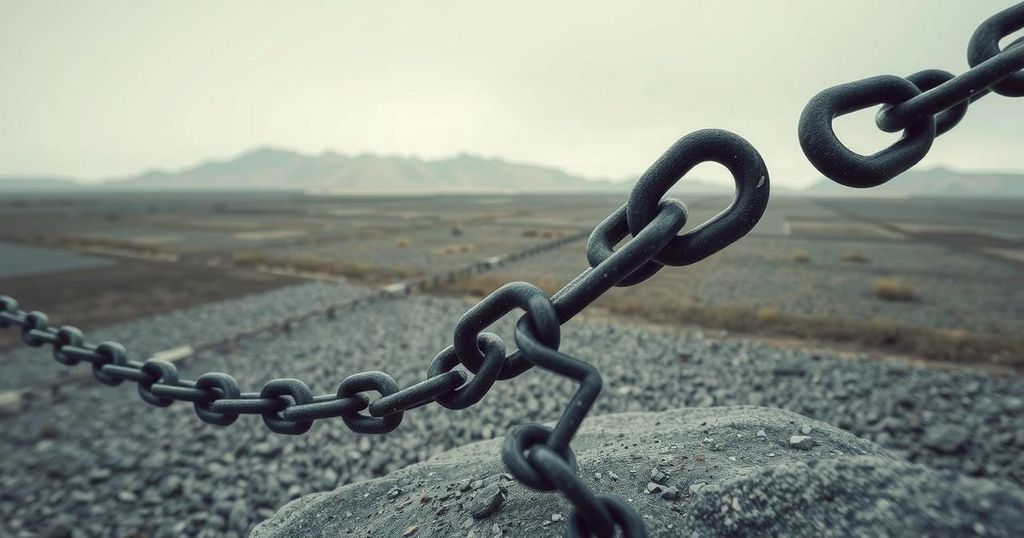The M23 rebel group has claimed to have captured Goma, the largest city in eastern DRC, intensifying tensions with the government and Rwanda. While the DRC denies the takeover, reports confirm significant unrest, including mass evacuations and conflict on the ground. The situation remains critical, potentially leading to broader regional instability.
The M23 rebel group has asserted its control over Goma, the largest city in eastern Democratic Republic of Congo (DRC), claiming it has captured the city from government forces. This development has heightened tensions between the DRC and Rwanda, who is accused of backing the M23. Although the DRC government disputes M23’s claims, reports of panic and unrest in Goma have emerged as the U.N. observed mass evacuations and heavy artillery in the region.
In a recent statement, M23 spokesperson Lawrence Kanyuka urged Goma’s residents to remain calm, stating, “The liberation of the city has been successfully carried out, and the situation is under control.” As the DRC soldiers faced M23’s advance, some reportedly surrendered their weapons before the ultimatum expired. Videos show M23 rebels patrolling significant areas within Goma, including key transportation routes and the airport.
Despite DRC’s assertions of control over parts of Goma, including the airport, ongoing conflict has led to heavy bombardment and a notable prison break involving thousands of inmates. Local reports describe chaotic scenes, with confusion among residents as gunfire persists. Thousands of residents have fled Goma, exacerbating the humanitarian crisis in the region.
The situation has drawn attention to the complex background of the conflict, which has persisted for over three decades due to the region’s mineral wealth. The M23, formed in 2012, links to earlier combatants claiming to protect the ethnic Tutsi population while benefiting from alleged Rwandan military support. The DRC alleges documentation of Rwandan troop involvement in aiding M23’s efforts.
U.N. Secretary-General António Guterres has called for Rwandan forces to cease support for the M23, amid accusations of the Rwandan army shelling the DRC, causing civilian casualties. The expanding violence hints at a resurgence of armed hostilities in the already destabilized eastern DRC region, which could lead to broader regional conflict, involving neighboring countries.
Current fighting involves around 14,000 U.N. peacekeepers under the MONUSCO mission, who are primarily supporting the DRC troops against M23. The U.N. has reported recent casualties among peacekeepers, including from South Africa and Malawi. With Goma’s airport closed and roads blocked, the humanitarian crisis worsens, as thousands remain displaced amid escalating violence from the M23 insurgency.
The eastern Democratic Republic of Congo (DRC) has suffered prolonged instability exacerbated by various armed groups struggling for control over rich mineral resources. The M23 rebel group’s activities have intensified since 2012, claiming to protect local ethnic groups while allegedly being bolstered by support from neighboring Rwanda. This has led to worsening humanitarian conditions, with significant displacement and fatalities in the region. The international community, including the U.N., is actively involved in attempting to manage the crisis and stabilize the conflict-ridden area.
The recent capture of Goma by the M23 rebel group underscores the critical and deteriorating situation in eastern DRC, drawing attention to long-standing regional tensions involving Rwanda. As thousands flee and humanitarian operations face shutdown, the risk of deeper conflict grows. The stability of the DRC is threatened, and the ramifications may extend beyond national borders, impacting regional security and humanitarian efforts.
Original Source: www.twz.com




